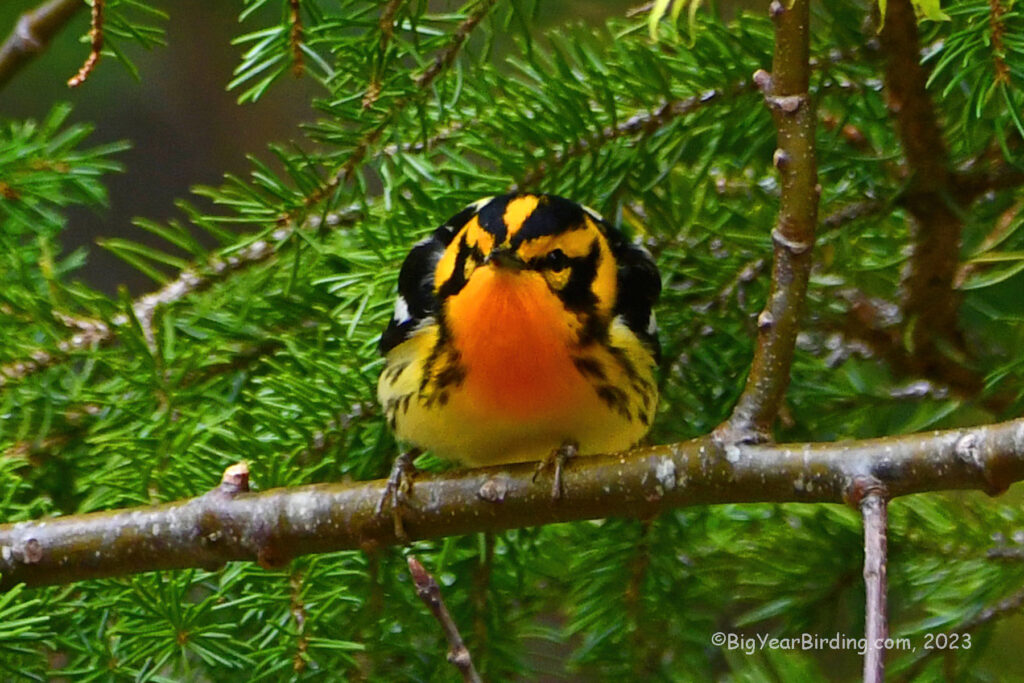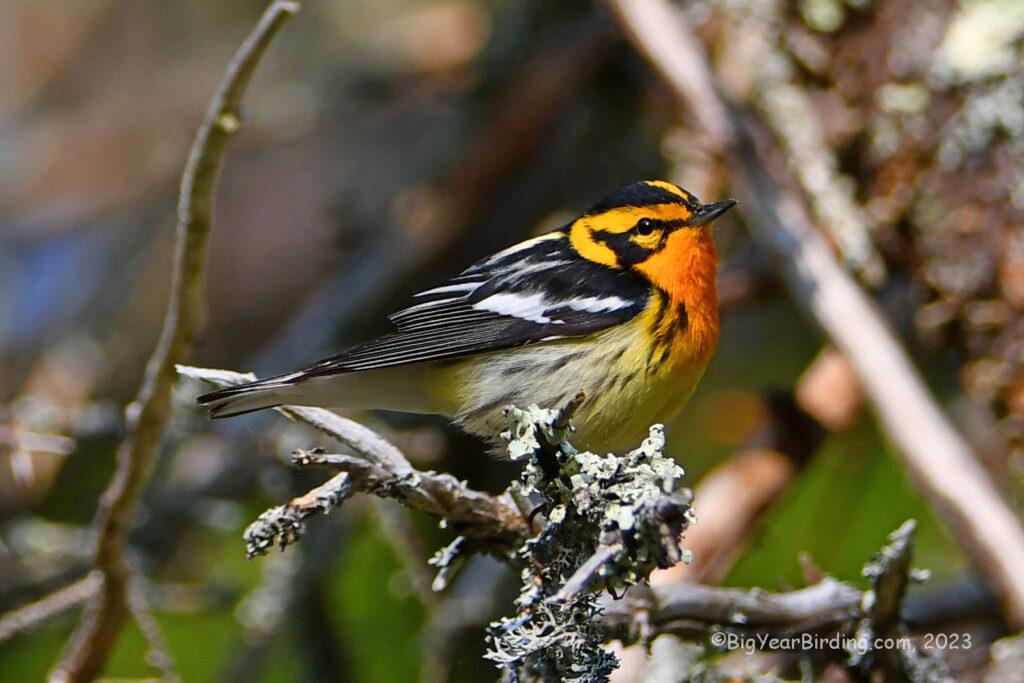
The Blackburnian Warbler (Setophaga fusca) is a small, brightly-colored bird that breeds in the boreal forests of North America. It measures about 4.3-5.1 inches (11-13 cm) in length and weighs around 0.28-0.35 ounces (8-10 grams). It is one of the smallest warblers in North America. The Blackburnian Warbler has a bright orange throat and breast, a black back, and contrasting white wing bars. The male has a distinct black crown while the female has a yellow crown with black streaks. The striking orange coloration of this warbler makes it easily recognizable and distinguishable from other warblers.
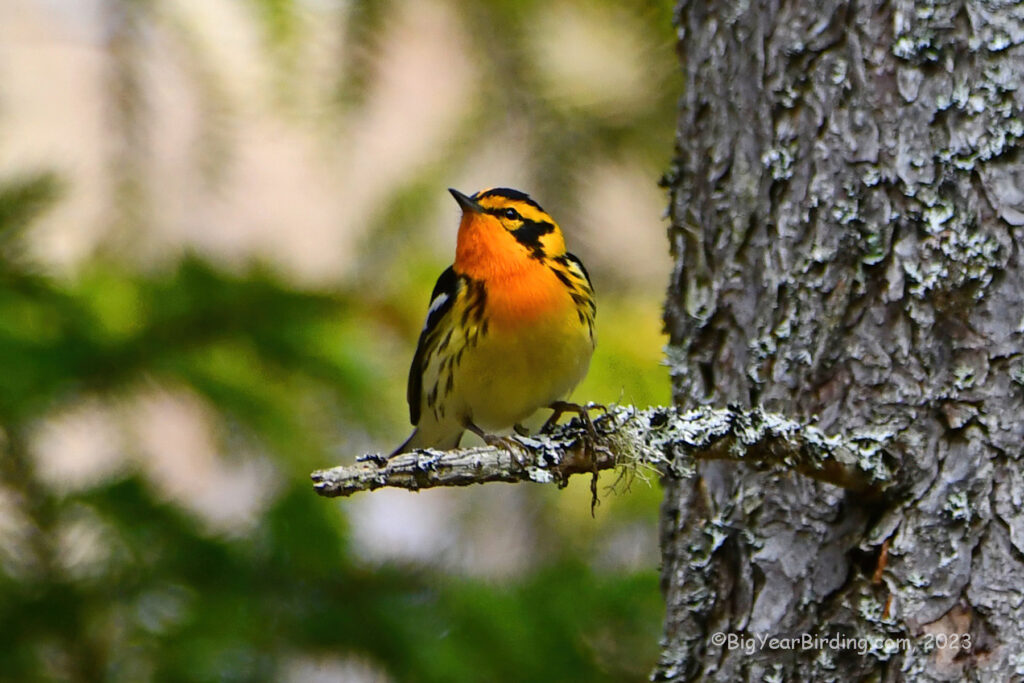
The Blackburnian Warbler is a neotropical migrant that travels long distances twice a year. It breeds in the boreal forests of Canada and the northeastern United States and migrates to Central and South America during the winter. During migration, they can be found in a variety of habitats, including forests, wooded areas, and shade-grown coffee plantations. They are known for their distinctive song, which is a high-pitched, thin, insect-like trill.
The Blackburnian Warbler is primarily insectivorous, feeding on a variety of insects and spiders, including caterpillars, beetles, and aphids. It forages actively in the treetops, and occasionally descends to lower vegetation to feed. This warbler is known for its acrobatic feeding behavior, clinging to the undersides of leaves and branches to capture its prey.
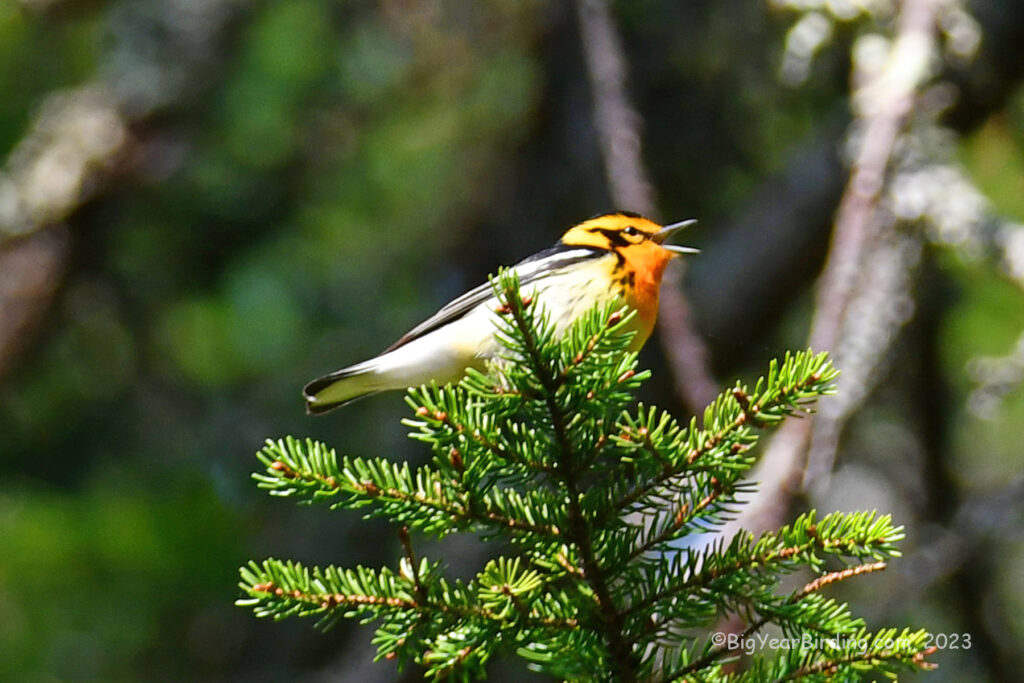
Due to habitat loss and degradation, the Blackburnian Warbler is considered a species of concern by conservation organizations. Boreal forests, where the species breeds, are under threat from logging, mining, and oil and gas development. Shade-grown coffee plantations, which provide important wintering habitat for the species, are also under threat from deforestation and conversion to sun-grown coffee. Efforts are underway to conserve and restore habitat for the Blackburnian Warbler throughout its range.
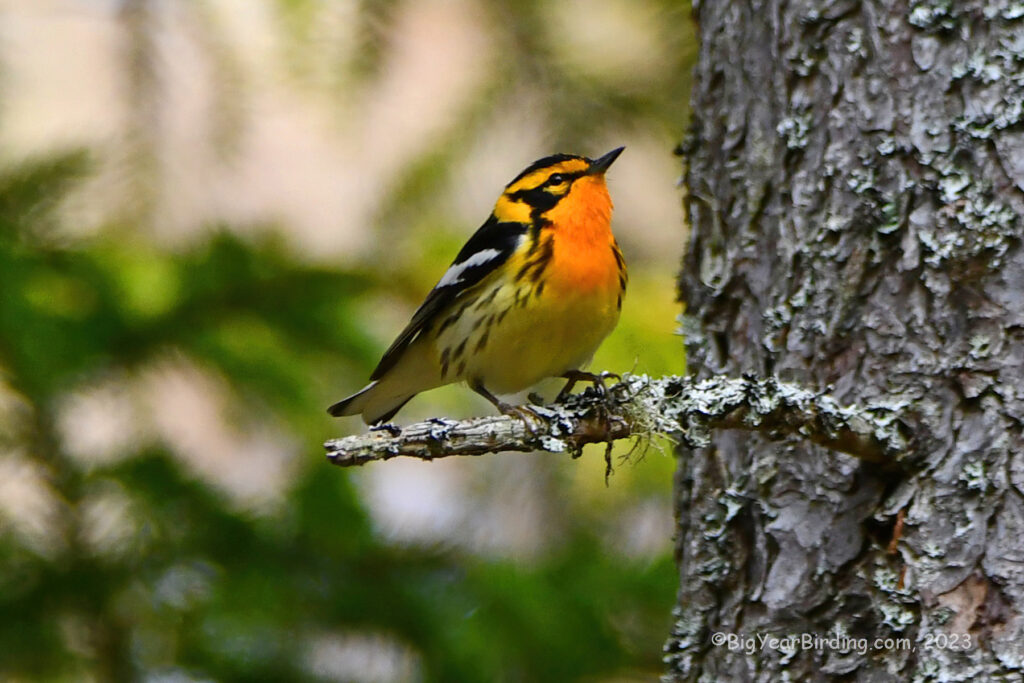
In summary, the Blackburnian Warbler is a small, brightly-colored bird that breeds in the boreal forests of North America and migrates to Central and South America during the winter. It is easily recognizable by its bright orange throat and breast, black back, and white wing bars. It feeds primarily on insects and spiders and is known for its acrobatic feeding behavior. Due to habitat loss and degradation, the Blackburnian Warbler is considered a species of concern, and conservation efforts are underway to protect and restore its habitat.
